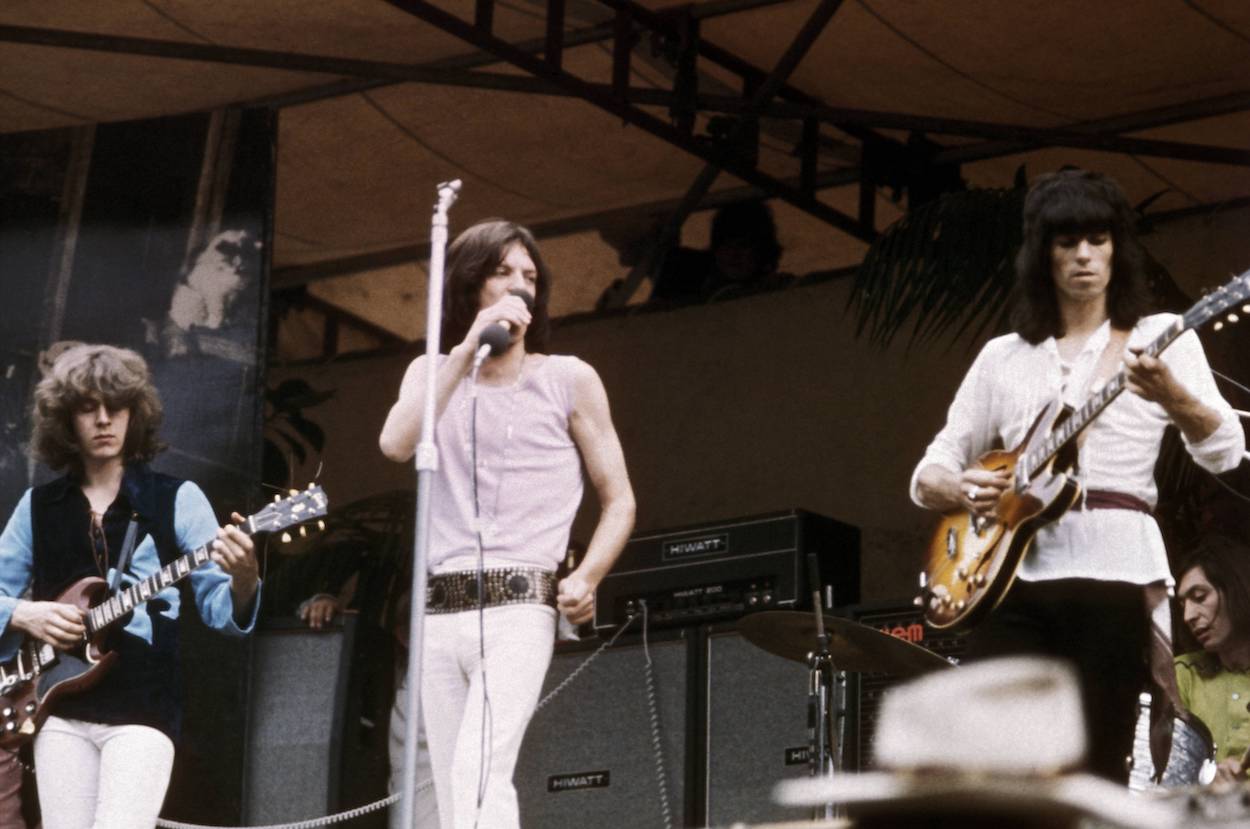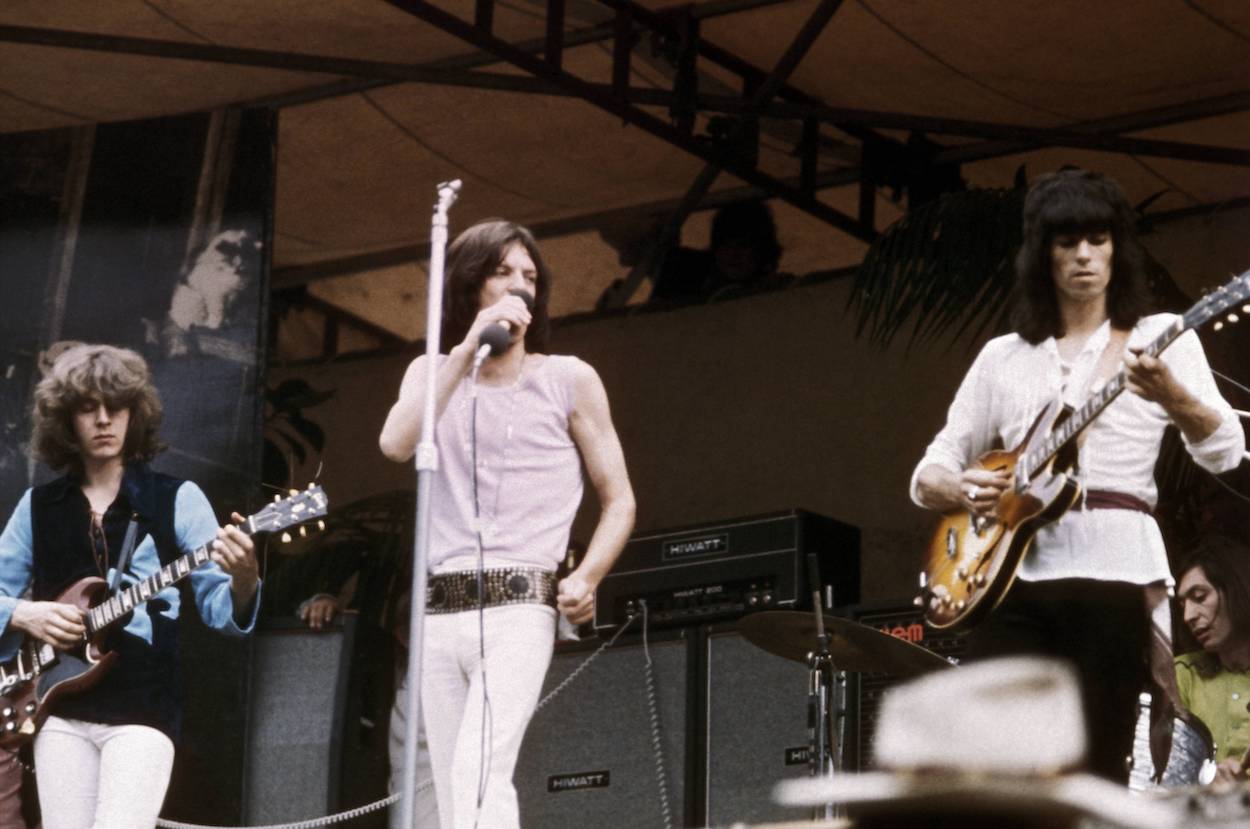
Keith Richards Once Revealed 1 Challenge The Rolling Stones Faced While Making Some Their Best Music
No matter how you look at it, the Rolling Stones are one of the most pivotal bands in the history of rock and roll. They’ve got longevity, iconic band members, hit songs across multiple decades, and a sustained creative peak few artists can match, though there were obstacles. Keith Richards said the Rolling Stones faced one major challenge while creating some of their best music.

The Rolling Stones sustained a creative peak for several years
When a band has been around for 60 years, as the Rolling Stones have, it’s bound to have a few ups and downs. Still, it’s not hard to argue that the band reached a creative high point in the late 1960s and early 1970s.
The Rolling Stones released four of their best albums (some might say their best four) consecutively. Starting with 1968’s Beggars Banquet through 1972’s Exile on Main St. — with 1969’s Let It Bleed and 1971’s Sticky Fingers in between — the Stones dropped four straight classic albums.
The band sustained its creative outburst despite some trauma. Founding member Brian Jones drowned in 1969, meaning the group had to find a new rhythm guitarist. Mick Taylor joined the group for Let It Bleed (Jones also appeared on the album) and played on Sticky Fingers and Exile. Taylor was part of the band for Goats Head Soup and It’s Only Rock ‘n’ Roll, too.
Taylor provided solid guitar work for the group, but Keith Richards said his presence made creating those stellar Rolling Stones albums a challenge.
Keith Richards explains how playing with Mick Taylor in the Rolling Stones was a challenge
Taylor might have been just what the Stones needed after Jones died. Talented and reliable, he added a dose of professionalism and stability that Jones lacked just before his death.
For all of Taylor’s positives, Richards said the chemistry between the two never really developed, which made it hard to achieve the Stones’ signature sound (per GuitarPlayer):
“It was much harder to get a Rolling Stones sound with Mick Taylor … As fabulous as he is as a lead guitarist, he wasn’t a great rhythm player, so we ended up taking roles. When Brian and I started, it was never like that. It’s much easier with Brian, personally … [A]nd this isn’t in any way to knock Mick. I mean, he’s a fantastic guitar player. Even if he couldn’t play s***, I’d love the guy. But chemically we didn’t have that flexibility in the band.”
Keith Richards describes the challenge of playing with Mick Taylor in the Rolling Stones
It’s hard not to listen to songs like “Rip This Joint” from Exile or “Star Star” from Goats Head Soup and not be convinced Richards and Taylor had a great working relationship. However, Richards wasn’t the only one who felt the chemistry was lacking. Taylor left the band in 1974, and Richards said replacing him with Ronnie Wood was one of the easiest decisions the Stones ever made.
Richards felt there was no doubt Ronnie Wood was the ideal replacement for Taylor
Richards said he loves Taylor, but their lack of chemistry was a challenge to making some of the Rolling Stones’ classic albums. That wasn’t the case with Ronnie Wood, who replaced Taylor in 1975.
Richards, Taylor, and Mick Jagger contributed to Wood’s 1974 solo debut. Wood helped write one of the Stones’ soon-to-be hits during the recording sessions. Richards said the band auditioned several guitar players as Taylor’s replacement, but their search ended close to home.
Richards said one of the easiest decisions the Rolling Stones ever made was choosing Wood to be their rhythm guitarist. His skill and familiarity with the band’s catalog helped him mesh with the band immediately.
The Rolling Stones made some of their best music despite a lack of chemistry between Richards and Taylor. The band created some of their best latter-day songs because of Wood and Richards’ cohesive talents.
For more on the entertainment world and exclusive interviews, subscribe to Showbiz Cheat Sheet’s YouTube channel.


